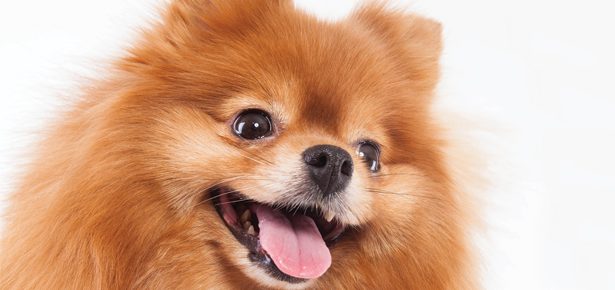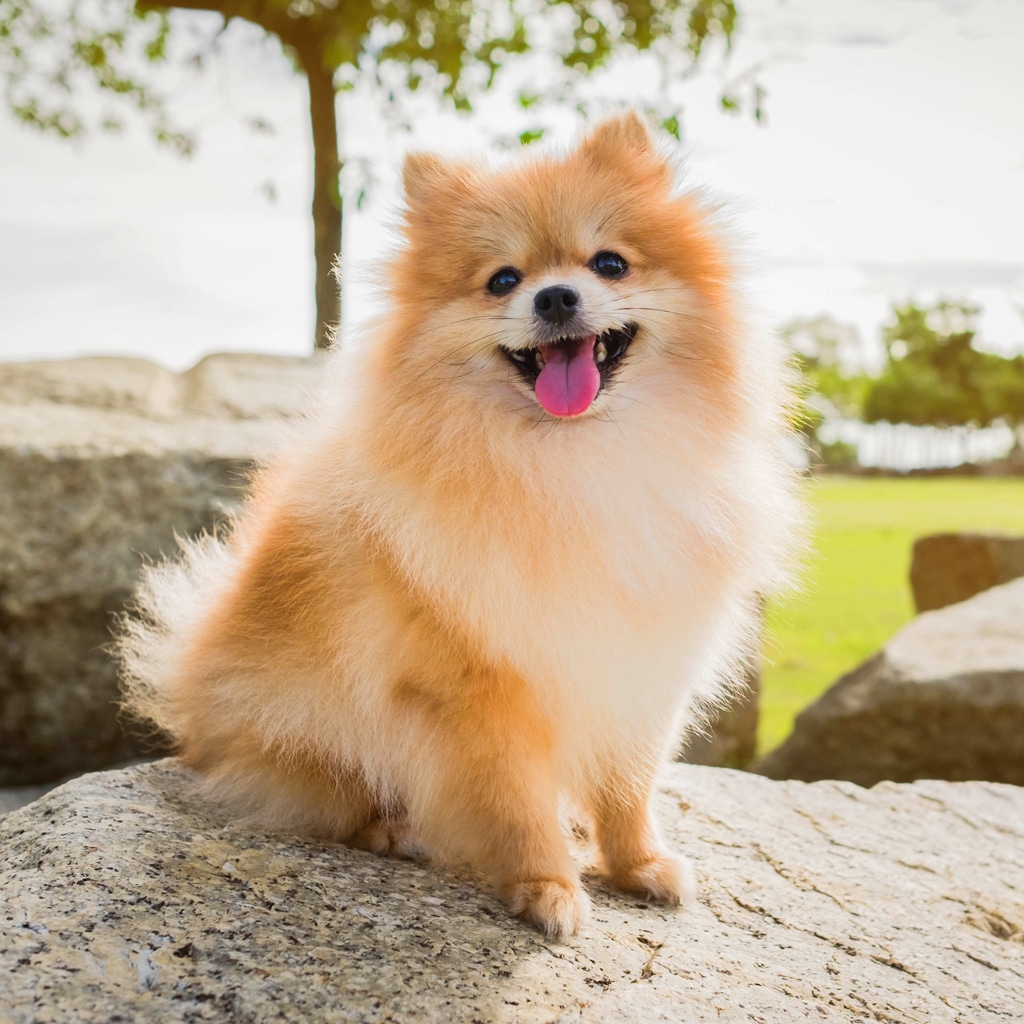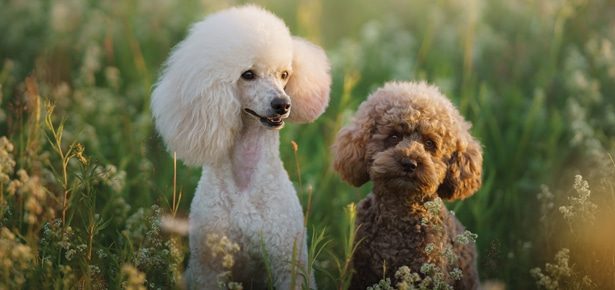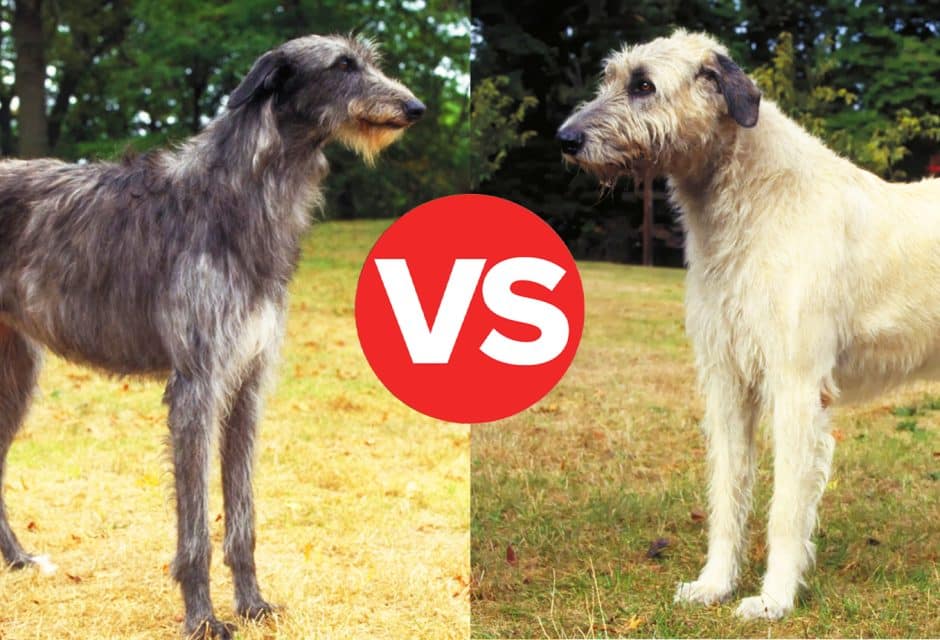

The Pomeranian
Pint-sized and plucky

Tip, tap, tip, tap, tip, tap…. That’s the sound of a Pomeranian walking by, and I dare you not to smile. After all, these pint-sized pooches don’t just walk—they prance. The friendly Pomeranian pairs his animated gait with a joyful spirit and endearing personality. And does this little dog have attitude? You bet—with a capital A. Although a member of the Toy group today, the Pomeranian descended from the hearty Spitz family of dogs native to Iceland and Lapland. The early Pomeranian was substantially larger than today’s, weighing on average close to 30 pounds, and worked in both herding and sledding capacities. The breed was named after the region of Pomerania, now absorbed into parts of Germany and Poland. It was in this region where much of the breed’s development occurred, including its significant reduction in size and transformation from a tough working animal to a lovable lapdog.
Pomeranians were still a fairly obscure breed when they were recognized by The Kennel Club in 1870. The breed’s popularity soared, however, after Britain’s dog-loving, popular monarch Queen Victoria discovered them in the 1880s. In 1888, the Queen was given a Pomeranian named Marco and her devotion to him cemented the breed’s future as a popular companion. The American Kennel Club (AKC) recognized the breed in 1900, the same year the American Pomeranian Club was formed.

pattarawat/Shutterstock
Today, the Pomeranian is a pint-sized companion known for its intelligence, extroverted personality, and desire to please. Consistently ranked in the top 20 of the AKC’s most commonly registered breeds, it’s clear that scores of people have already concluded what Queen Victoria discovered so many years ago—it’s easy to love a Pom.
Most Popular Dogs in the US
According to the most recent AKC registration statistics (2022)
[1] French Bulldog
[2] Labrador Retriever
[3] Golden Retriever
[4] German Shepherd
[5] Poodle
[6] Bulldog
[7] Rottweiler
[8] Beagle
[9] Dachshund
[10] German Shorthaired Pointer
[23] Pomeranian
Its’ good looks certainly don’t hurt. The Pom is a short-backed breed with a gorgeous, heavily plumed tail that serves as one of its trademark features. The breed ranges in size from three to seven pounds and comes in a variety of colours, patterns, and variations, all of which are accepted by the AKC, though orange and red coat colours are the most common.
Keeping the Pomeranian looking his dashing self does take a bit of work. This is a double-coated breed with a soft, short undercoat and a long, harsher-textured outer coat. That outer coat is one of the throwbacks to the Pom’s early beginnings as a hearty working breed. Regular brushing is required to prevent mats and you may need to trim your Pom to keep him looking dapper.
Exercise requirements for the Pomeranian are modest. Daily walks and play time will do the trick. The breed does bond closely with people, however, so plenty of quality time with your Pom is a must. This affectionate breed will thrive only in an environment where he’s considered a part of the family and his adoration is reciprocated.
While the Pom may not need a lot of physical outlets, this versatile breed will almost certainly thrive in just about any activity you throw his way. Intelligent and extremely eager to please, Pomeranians respond well to positive reinforcement training and have excelled in pretty much every imaginable activity—conformation, obedience, tracking, therapy work… you name it, the Pom can do it and do it with style. Frequent travellers will likely find that Poms are good companions for the road; the Pomeranian is happy to go where his owners go.
In terms of health, the Pomeranian is a relatively hearty breed. Instances of alopecia (hair loss) are noted in the breed but the cause is as yet undetermined. In addition, like so many of the Toy breeds, the Pom can be prone to knee issues, most notably luxating patellas. As with other purebreds, if you’re in the market for a puppy from a breeder, be sure to do your research and seek health clearances and references to ensure you are working with a dedicated and responsible breeder. There are also lots of Poms—puppies and adults alike—in rescue and awaiting forever homes. Check petfinder.com or adoptapet.com.

Fleur-k/Bigstock
Back to that attitude, though. This truly is a giant of a dog in a tiny package. Having had the good fortune to see the breed in action at the Westminster Kennel Club Dog Show several times, I can attest to the fact that the Pomeranian is always a crowd favourite. Huge cheers and laughter always erupt when it’s time for the Pom to strut his stuff during Toy Group judging. Each time I witnessed this, I thought the same thing: the Pom knows the crowd loves him; he knows it, and he loves them, too. He works the crowd and brings a big-dog level of personality to the table. Whether its a Pom in the show ring or back home at the local offleash park, one thing is for sure: the Pom has absolutely no idea he’s a little dog.
So, yes, the breed gets a capital A for attitude—and in the best way possible. But A is also for adorable, because that’s what the Pomeranian is. That fox-like grin, that joyful spirit, and that larger than life personality? Life with a Pom is guaranteed to keep you smiling.
» Read Your Breed For more breed profiles, go to moderndogmagazine.com/breeds
This article originally appeared in the award-winning Modern Dog magazine. Subscribe today!
Join the newsletter and never miss out on dog content again!
"*" indicates required fields
By clicking the arrow, you agree to our web Terms of Use and Privacy & Cookie Policy. Easy unsubscribe links are provided in every email.





